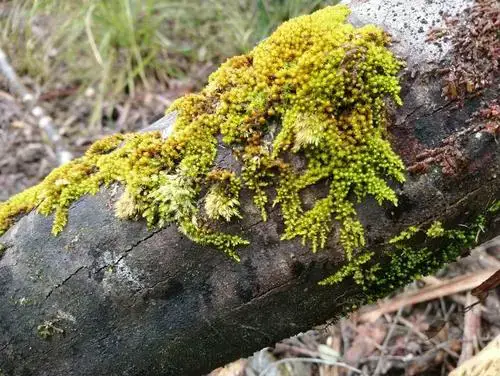
splacvas2m.jpg from: https://www.ni.is/biota/plantae/bryophyta/bryopsida/kulutedill-splachnum-vasculosum
Splachnum vasculosum var. heterophyllum: The Fascinating Dung Moss

medium.jpeg from: https://www.naturalista.mx/taxa/169285-Splachnum-vasculosum

48324_2258_4.jpg from: https://artfakta.se/naturvard/taxon/splachnum-vasculosum-2258
Introduction
Mosses may be small, but they play a big role in many ecosystems around the world. One particularly interesting moss is Splachnum vasculosum var. heterophyllum (Drumm.) Brassard, also known simply as Splachnum. This unique moss belongs to the Splachnaceae

splachnum_vasculosum1.jpg from: https://luopioistenkasvisto.fi/Sivut/sammalet/pallosompasammal.html
family and has some truly remarkable adaptations. Let’s take a closer look at this fascinating little plant!
Background on Mosses
Before diving into the specifics of Splachnum, it’s helpful to understand a bit about mosses in general. Mosses are non-vascular plants in the division Bryophyta. Unlike other plants, they lack true roots, stems, and leaves. Instead, they have structures that serve similar functions. Mosses are found all over the world in a variety of habitats.
Morphology and Identification
Splachnum vasculosum var. heterophyllum

normal_P1090295.jpg from: https://www.vastavalo.net/pallosompasammal-splachnum-pallosompasammalta-358551.html
is a small moss, typically growing in tufts or cushions. Its scientific name comes from its heterophyllous leaves, meaning the leaves vary in shape and size. The leaves are oblong-lanceolate and have serrated margins. Splachnum produces unique urn-shaped capsules on tall seta (stalks) that contain the spores. The capsules have a distinct hypophysis (swelling) at the base.

79a098238c55995c47070d43fa90e9e5.jpg from: https://www.pinterest.com/pin/large-photo-of-splachnum-ampullaceum–574279389978784474/

RIMG0390_Splachnum_ampul_Moose_1463618469_web.jpg from: https://bryophyteportal.org/portal/taxa/index.php?taxon=157192&taxauthid=1
Global Distribution and Habitat
Splachnum is found in northern regions around the world, including parts of North America, Europe, and Asia. It grows exclusively on the dung of herbivorous mammals like reindeer, elk, and cattle. The moss prefers high-elevation, open areas like tundra and bogs where these animals graze.
Ecological Roles and Adaptations
The relationship between Splachnum and animal dung is a prime example of specialization. The moss has evolved several key adaptations:

Splachnum_ampullaceum_002.JPG from: https://cisfbr.org.uk/Bryo/Cornish_Bryophytes_Splachnum_ampullaceum.html
Spore dispersal: The hypophysis produces a sticky substance that attracts flies. The flies inadvertently carry the spores to fresh dung piles.

splachnum_ampullaceum_1fe.jpg from: https://www.floralimages.co.uk/page.php?taxon=splachnum_ampullaceum,3
Nutrient acquisition: Dung provides the moss with essential nutrients like nitrogen and phosphorus that are often limited in its habitat.
Substrate specificity: Splachnum only grows on dung, likely to avoid competition with other mosses and plants.
By recycling nutrients from dung back into the ecosystem, Splachnum plays an important role in nutrient cycling in its habitats. It also serves as a host for various invertebrates.
| Characteristic | Description |
|---|---|
| Division | Bryophyta |
| Class | Bryopsida |
Family
 Splachnum%2Bampullaceum%2Bs1a.jpg from: https://southwalesbryos.blogspot.com/2016/06/splachnum-iii.html |
Splachnaceae |
| Genus | Splachnum |
| Habitat | Grows on dung in northern regions |
| Leaves | Heterophyllous (varying shapes and sizes) |
| Capsule | Urn-shaped with hypophysis, dispersed by flies |
Conclusion
Splachnum vasculosum var. heterophyllum is a remarkable moss that has evolved a highly specialized lifestyle. Its unique adaptations allow it to thrive in a challenging environment and play an important ecological role. Next time you’re out in the northern wilderness, take a closer look at any dung you come across – you might just spot this amazing little moss! What other fascinating examples of specialization in plants can you think of?